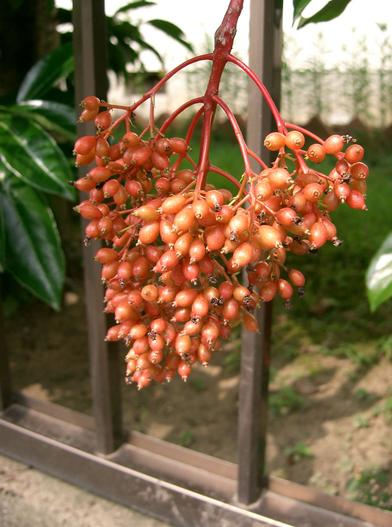Sweet Viburnum
(Viburnum awabuki)
Sweet Viburnum (Viburnum awabuki)
/
/

KENPEI
CC BY-SA 3.0
Image By:
KENPEI
Recorded By:
Copyright:
CC BY-SA 3.0
Copyright Notice:
Photo by: KENPEI | License Type: CC BY-SA 3.0 | License URL: http://creativecommons.org/licenses/by-sa/3.0/ | Uploader: KENPEI | Publisher: Wikipedia Commons











Estimated Native Range
Summary
Viburnum awabuki, commonly known as Sweet Viburnum, is an evergreen shrub or small tree native to the woodlands and forest margins of East Asia, particularly Japan, Korea, and Taiwan. It typically grows to a height and width of 12-18 feet (4-5 meters), featuring a dense, rounded form. The glossy, leathery leaves are a notable characteristic, providing a lush backdrop for the plant’s fragrant white flowers, which bloom in spring and are followed by red to black berries in the fall. These berries can attract birds and other wildlife to the garden.
Sweet Viburnum is valued for its attractive foliage, fragrant flowers, and the visual interest provided by its berries. It is commonly used for hedges, screens, or as a specimen plant in residential and commercial landscapes. This species prefers well-drained soils and is adaptable to a range of soil types, though it thrives in moderately fertile conditions. While it can tolerate part shade, it flowers best in full sun. Sweet Viburnum is generally low-maintenance but can be susceptible to pests like aphids and diseases such as leaf spot. It is also important to note that while it is not typically invasive, in some regions, such as Florida, it has escaped cultivation and become naturalized.CC BY-SA 4.0
Sweet Viburnum is valued for its attractive foliage, fragrant flowers, and the visual interest provided by its berries. It is commonly used for hedges, screens, or as a specimen plant in residential and commercial landscapes. This species prefers well-drained soils and is adaptable to a range of soil types, though it thrives in moderately fertile conditions. While it can tolerate part shade, it flowers best in full sun. Sweet Viburnum is generally low-maintenance but can be susceptible to pests like aphids and diseases such as leaf spot. It is also important to note that while it is not typically invasive, in some regions, such as Florida, it has escaped cultivation and become naturalized.CC BY-SA 4.0
Plant Description
- Plant Type: Shrub
- Height: 12-18 feet
- Width: 12-18 feet
- Growth Rate: Moderate
- Flower Color: White
- Flowering Season: Spring, Summer
- Leaf Retention: Evergreen
Growth Requirements
- Sun: Full Sun, Part Shade
- Water: Medium
- Drainage: Medium
Common Uses
Bee Garden, Bird Garden, Border Plant, Butterfly Garden, Deer Resistant, Drought Tolerant, Fragrant, Hedges, Hummingbird Garden, Low Maintenance, Rabbit Resistant, Street Planting
Natural Habitat
Woodlands and forest margins of East Asia, particularly Japan, Korea, and Taiwan
Other Names
Common Names:
Scientific Names: , Viburnum awabuki, Viburnum odoratissimum var. awabuki, Viburnum awabuki var. serratum, Viburnum awafuki, Viburnum liukiuense, Viburnum odoratissimum var. serratum,
GBIF Accepted Name: Viburnum odoratissimum var. awabuki (K.Koch) Zabel